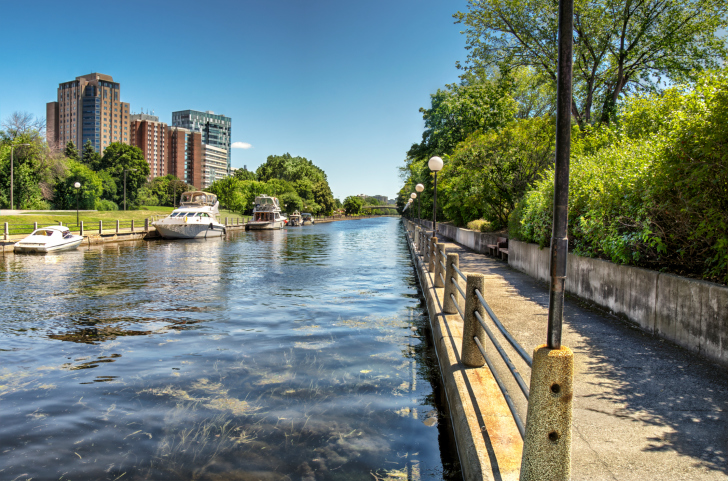Stories from the run commute: Running the Rideau Canal

Andrew Pelling doesn’t believe in a stressful commute home at the end of a packed work day. When 5:00 p.m. rolls around, many workers suffer through the traffic, sitting in cars letting the day’s frustrations stew. But Pelling is out running along Ottawa’s Rideau Canal, enjoying the scenery of this iconic Canadian landmark. He enjoys his free time starting immediately when the work day ends.
Pelling spends his days at the University of Ottawa as a Canada Research Chair and professor running Pelling Lab, a bio-hacking lab where scientists and artists collaborate to create biological objects that don’t occur naturally by physically manipulating their make-up. “I feel very lucky as I spend most of my day dreaming up experiments and projects and then seeing how things turn out,” he says. This is the job which he has run-commuted home from a few times a week (give or take) for the past two years.
“The decision to only run home made it easier to deal with logistics,” he says. Many runners avoid the run commute because of the lack of shower facilities at work but, as Pelling points out, if you only run home, that doesn’t become a problem. Normally the route is about 10K. That changes depending on what he’s training for.
Running to or from work takes planning and organization. He keeps extra shoes and hats at the office and uses his rest day (Monday) to prepare for the week. “This means bringing in bags of fruits and containers of soup that I can store in the fridge in my office for weekday lunches, bringing in a few extra shorts, shirts, hats, socks to leave in my office,” says Pelling. The rest day is also when he takes home the items from last week’s commute. “The one thing I think about very carefully is my laptop and if I need to bring it home that night or not,” he says.
When he does need to bring it home, he’s made sure to find just the pack that will fit the Macbook Air. “The key to my run commute is a good running pack,” says Pelling. “Oh and during the winter, when it gets dark early, I always have at least two small clip-on lights (front and back) permanently installed on my pack. During the winter I also put spikes in my shoes. I just use small galvanized sheet metal screws.” Another tip for new run commuters: put an elastic around the keys. “That was a total moment of zen in my run commute life,” says Pelling.
When all the technicalities have been dealt with, it’s time to cruise along the canal. The route doesn’t stay constant but a much-enjoyed option for him start at the university, and go north along the canal. He continues along until he reaches Sussex Drive running past the Prime Minister’s house and Rideau Hall. Then, he’ll dart over either to a trail beside the parkway overlooking the canal or cut down to a pristine path that runs right along the shore. Sections that he runs every day include parts of the race courses of both The Army Run and of Ottawa Race Weekend.
That’s the ideal path in summer. In winter, Pelling takes the most direct route home after running north on the Rideau for one kilometre. “I try to think of it as mental training for those late kilometres in a marathon,” he says. “In the dark and cold of winter, it really trains you to keep focused, despite how much it can suck at -30C and in a blizzard.”
As runners all know, after living in a city for a number of years, you rack up memories. There’s nearly no better time to reminisce than when going for a run and passing the spots where a fond moment happened. That’s true for Pelling too.
“One of my favourite running memories was right outside of Rideau Hall,” he says. “I gave the Governor General a high five during the Army Run a few years ago. Every time I pass that point I think of that moment.”

